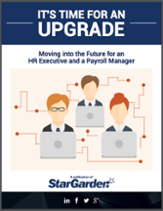5 Ways Disconnected Enterprise Systems Hurt Organizations

Have you ever wondered why people keep buying one Apple product after another? Many people even have more than one, owning a personal iPhone and a separate work iPhone. Many families all own iPhones to make communication easier and more convenient between them. Apple has focused on ensuring their hardware and software applications work seamlessly, using an integrated operating system.
What Apple understands is that customers want easy device compatibility, secure data, and a consistent user experience across various platforms. Regardless of which device is used, and where, Apple syncs users’ data. Many observers have named Apple’s iOS the ultimate platform.
Unfortunately, when it comes to their enterprise systems, many businesses fail to use this integrated strategy. Using a system based on individual personal computers instead of an integrated enterprise system platform has been hurting organizations for years. Here are 5 ways that a lack of an integrated platform strategy can hurt an organization:
- Data entry duplication: Having systems that do not talk to each other means information can be duplicated, increasing manual entry time. It also means that organizations may spend lots of money on expensive data integration projects, which require further time and expertise to get accurate data management. This leaves gaps in time where there is no reporting, which hurts the company’s ability to make time-sensitive, precise data-driven decisions. Additionally, data integration projects are a constant bleed of money without improving the bottom line of organizations.
- Errors are costly: Data duplication methods are hugely error prone. These issues need attention and this, in turn, reduces productivity of employees, who spend their time troubleshooting rather than doing value-added work.
- Loss in competitive advantage: Lack of data exchange between different HR systems, like those used to track compensation, learning, talent, recruitment, and finance, results in organizations losing key HR analytic data and insights. This reduces the effectiveness of strategic decision making – excellence in which is necessary to remain competitive in today’s market.
- True business process automation becomes a challenge: When systems don’t talk to each other, their business processes automation becomes more challenging. Since you’re only realizing surface level benefits from your systems, you are wasting their capabilities.
- Compliance becomes more challenging: The inability of systems to respond to a changing regulatory environment makes reporting to administrative agencies unnecessarily difficult. This can result in legal issues for organizations, further causing companies to direct resources away from the strategic goals of the organization.
The problems described above become even more apparent in human resource information systems that use standalone strategic HR applications to manage things like talent, learning, payroll and benefits. It is much more beneficial for human resources to take a holistic approach, looking at systems as a whole instead of a bunch of single components. Linking the systems together using an integrated HR system, and using systems with HR capabilities as well as iPaaS (integrated platform as a service), can allow a more intelligent use of HR applications. Implementing an integrated HR enterprise system allows your business to get the maximum benefit out of your IT investments.

